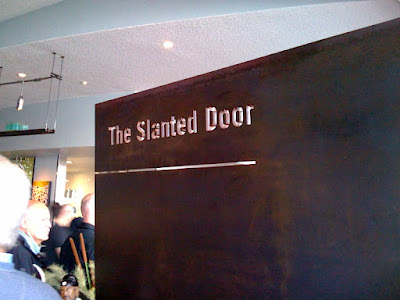
In a sleepy one-road town on Route 66, my girlfriend and I stayed for two nights for our trip to the Grand Canyon. Williams, Arizona, about sixty miles from the National Park is one of the closest and most affordable places to lodge if you're going to see this magnificent natural wonder. When asked if the Grand Canyon is worth seeing, I always respond the same way--while most landmarks look smaller in person than you expect, the Grand Canyon is hundreds of times grander than you imagine. Since this is
Food Destination, I thought I'd profile three of the restaurants in town.
More...
As you can tell from the photo above, there's not much to this little town. Mostly dingy hotels and a scattering of restaurants, the tourism on route to the Grand Canyon seems to be the only thing keeping it alive. Oddly, there's a very modern looking Safeway grocery store at one end of town though. I guess everyone's got to have their slice of the twenty-first century.
Night 1: Dara Thai Cafe

The town's dining options are dominated by steak and chop houses offering slabs of meat in various slices of Americana. We actually searched out the outlier in all these restaurants and visited the one "ethnic" restaurant in town. It's actually not that easy to find, since the listed address is actually a real estate office. The cafe is hidden up Grand Canyon Boulevard, just keep your eyes out for signs. Being a Thai restaurant in the middle of nowhere with no discernible access to fresh ingredients, I didn't expect much. Places like these could get away with serving whatever chicken satay slathered in Sriracha and call it Thai. But the first thing I heard when I opened the door was rapid chattering of a Thai tour group. They were interacting with the waitstaff and seeming to enjoy their meals. I took their lack of total disdain as all the assurance I needed. A tom yum soup, a spicy tofu stir-fry and a dish of chicken sauteed in coconut milk called "jungle princess" all held up to the standards of Thai restaurants in LA. Certainly it's no Ruen Pair or Lotus of Siam, but I would go to Dara Thai Cafe even if it wasn't the only option in town.
Night 2: Rod's Steak House

After a day of hiking the Bright Angel trail into the Canyon, we came back to down ready to satisfy our inner carnivore. Along Interstate 40 driving towards Williams, we saw a cow silhouette on those familiar blue boards that show dining options at the exit. That cow would soon be very familiar to us, as it's used all over Rod's Steak House.

As with most establishments along Highway 66, Rod's is old. Old enough to have switched hands over three sets of owners and have legacies going back to the 1940s. In fact, judging by the interior, it probably hasn't been refurbished in decades. Though I can see how replacing some siding and table cloths might impinge on its Old West façade. Steaks at under $20 is not a bad price. I actually ordered their signature "charred steak", dipped in sugar and grilled. Yes, I was just as skeptical as you. Indeed, the sugar caramelized, then quickly burned, leaving a blackened exterior. But the steak was thick enough to maintain a pink medium-rare center. As a matter of principle, I refuse to order steak at restaurants that don't specialize in steak. While Rod's beef was far from transcendent, a thick, juicy slab is exactly what you need after a long day's hike. I didn't care much for milking the historic Highway 66 vibe, but if that appeals to you, Rod's certainly satisfies.
Morning 3: Old Smokey's Pancake House

Before leaving town back for LA, we decided on an extended breakfast at one of the many diners around Williams. Old Smokey's, like Rod's, features a long history coinciding with Route 66. In its previous life, it had been a diner, barbecue, and now a pancake house. Given its claim to fame, I had to order the pancakes. An unlimited stack of buttermilk pancakes for $5.99 was the way to go. But when I got my order, I was shocked that the buttermilk pancake plate was just one gigantic pancake. With griddle cakes this wide, it's hard to cook evenly, but they did a great job. Consistent throughout, and topped with one of the flavored syrups added to my delight. Strawberry, boysenberry, and pecan syrups all added something different to my pancake Frisbee. Though I settled on the nuttiness of the pecan as my favorite. Since I had a long way to drive, I didn't get another pancake, though in retrospect, $5.99 for one pancake would be too much to pay. To make it worth your while, at least down two of those suckers.
While there are a few more restaurants up in Tusayan, a few miles outside the Park, and many high-end eateries within the Park, Williams offers that small town feel. That is, assuming the small town has no evidence of any of the services you'd expect in a fully functioning town besides the tourism. But most of all, Williams has the cheapest lodging if you're on your way to the Grand Canyon, a trip I highly recommend.
Dara Thai Cafe
145 W Route 66, Suite C
Williams, AZ 86046
(928) 635-2201
~$10 a dish
Rod's Steak House
rods-steakhouse.com
301 E Route 66
Williams, AZ 86046
(928) 635-2671
>$20 a steak
Old Smokey's Pancake House
sideeffectsllc.com
624 W Route 66
Williams, AZ 86046
(928) 635-1915
$5.99 unlimited pancakes
^































